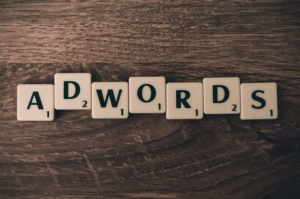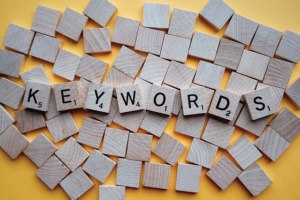How to Write Copy That Sells – Use Benefits
As copywriters we’ve all read that the best way to write copy that sells is to use benefits. But what these articles don’t tell us is how to identify and communicate the benefits that are truly going to compel your readers to reach for their wallets.
In this article you’ll learn how to:
· Understand the difference between features and benefits
· Identify true benefits
· Deliver benefits in your copy
· Use features to support your benefits
Benefits vs. Features

Features are all very well, but they are not what sell your products or services. What matters to the consumer is what is in it for him and features don’t speak even half as loud as benefits (unless of course you have a highly technical readership, but we’ll come back to that in a bit). Generally, highlighting and communicating the benefits is the most powerful way to sell any type of product, service or brand.
So what’s the difference between features and benefits?
Features are the specifications of a product. They include the color, the dimensions, what it does and how it does it. They are the facts. Benefits are what the consumer receives as an outcome of using the features. The most powerful way to use them is to identify them, then to dig deep until you can tie them into the emotional wants and needs of the prospect. Once you understand how to do this process, then you will be able to write copy that sells.
In order to provide us with an example, let’s look at how we could sell a green toothbrush to our readers.
Green Toothbrush
Toothbrush company: It’s green and it’s got 300 scientifically shaped bristles.
Consumer: So? Why should I be interested – what’s in it for me?
Toothbrush company: Those 300 bristles are scientifically ergonomically shaped so that within just 90 seconds you can clear away all plaque even from the rear of your mouth and brighten your smile. You can be photographed knowing that you are going to have the whitest set of teeth in the photo. You can also relax when somebody leans over to you for an intimate chat, at work or at home. You can be confident that you don’t have bad breath as this toothbrush delves deep into the spaces between your teeth to clean.
That’s an example of how to sell using the benefits. Benefits are what the consumer will want to gain in exchange for a few of their dollars. Remember that the average human is a little ‘sheep-
 Listing an amazing set of features won’t swing it with our readers as they don’t want to and won’t put the mental work into piecing together how those features may be able to save them time or help them in anyway. They need to have everything spelt out to them to see why they should buy your product or service.
Listing an amazing set of features won’t swing it with our readers as they don’t want to and won’t put the mental work into piecing together how those features may be able to save them time or help them in anyway. They need to have everything spelt out to them to see why they should buy your product or service.
No, your readers aren’t stupid, but effective marketing communication needs to be straight to the point. After all you are competing with dozens of other marketing messages every day and if you don’t get your message across with clarity and speed then you could lose them altogether.
How to Identify True Benefits and Use Them in Copy
So what do you need to do to identify the benefits and use them?
Now you’re going to learn a 5 step process that can help you pull out the benefits and then get your message across to your consumers. We’re going to use the green toothbrush in order to demonstrate how you can apply this process to your own product.
1. Step 1 – use your resources. First off if you have existing happy customers then you should ask them what the benefit is of them using your product or service. Be sure to get specific and detailed answers. You should also ask any salespeople that you have too.
2. Step 2 –list all of the features of the product or service.Then take the three that are going to provide the biggest attraction.
a. 300 bristles
b. Scientifically v-
c. Angled neck
3. Step 3 – examine every feature to find the benefit in it from the consumer’s point of view.
a. Faster results from less brushing.
b. Bristles fit between teeth better for improved cleaning
c. Angled neck provides better reach to the rear of the mouth
4. Step 4 –
a. Smile will be brighter and whiter in less time from using more bristles.
b. Plaque and food will be easily brushed out from between teeth –
c. Less dentistry expense that comes from having fewer cavities.
5. Step 5 –
a. The good feeling that comes from knowing that you are going to look great in photographs with a full brighter and whiter smile.
b. The relief and confidence that comes from having sweet smelling breath. Ideal when it comes to building and keeping good relationships with colleagues, school friends and even most importantly – hot dates!
c. Being able to enjoy spending money on luxury items and not being the person who has not teeth in photographs.
Use Features to Support Your Copy
Features can help sell your product too. People like to think that they have made a logical decision and the features will give them some justification in making their purchase. The technical a product is – the prospect will be looking for more mention of features. So if you have a highly technical product then you’ll find that emotionally angled copy will be less effective and could even just annoy the technical reader. They are looking for a solution to a problem, and their purchase isn’t so much about want they want but about what they need.
Once you know how to pull out the benefits and connect them to the emotional desires of the consumer, you’ll have access to a powerful copywriting technique and you will know how to write copy that sells.
Action Steps to Take to Write Copy That Sells
- Talk to existing happy customers to understand more about what the product or service can deliver when it comes to benefits. You can also ask sales people if you have access to them.
- Get to know your product. List it’s features so that you’ve got a full understanding of what it is that you are selling and what it could offer your consumer.
- Start to build up what benefits the features deliver to the consumer.
- Finally, dig deep so that you can connect the features to the consumer’s emotional desires.
- Be sure to include the features in your copy to justify why the consumer should buy this product or service.
About the author: David Alger

San Francisco of Copywriting. Offering online
and in person copywriting classes since 2012.
Join me on sanfranciscoschoolofcopywriting.com




Well done David. I am a fervent believer in pinpointing benefits. It doesn’t require a sledgehammer, as we know; the remarkable Bill Bernbach proved that with unheard of benefit-driven headlines such as Lemon for Volkswagen. He turned an industry around. And those of us who are passionate about advertising that works, communication that’s effective were forever changed by how we approached our work. Well explained David. Thank you.
nice breakdown – I have shared this on Twitter and Facebook. So many people focus on the features without explaining how they benefit the user.
Hmmm, there are a number of elements in this article that fall apart when looked at closely. I’m not especially impressed. For example: the premise starts off with a “Green Toothbrush”. Does David mean green color, or eco-green? If the first, he should reference that somehow (“comes in 5 different colors”. Then may I suggest the BENEFIT to that: “so everyone in the family can tell which toothbrush is theirs”). BUT–if David means its eco green, he missed a major element in promotion.
OK, second: what exactly does this phrase mean? “Being able to spend money on luxury items…”. And David, I’m kindly omitting the typo in “person who has not teeth in photographs” as I’m sure you made an honest omission. But back to the gist: is he saying this toothbrush is a luxury item? Why? Price has never been mentioned, let alone the idea that it might be “the Rolls Royce of toothbrushes” (itself an interesting positioning strategy).
Third, David’s cavalier use of dubious conclusions makes me reluctant to EVER have him work on a project of mine. He should know that plaque, or lack of it, has nothing to do with “whiter teeth”. You can have teeth just from your hygenist, scraped clean and polished, with zero plaque…and they may be stained awful brown from coffee (ask me how I know this!). Granted, plaque will make teeth darker. But lack of plaque (from using this toothbrush) does not make them whiter. It’s this sloppy thinking that is a big red flag for me. Oh, merely a detail, you say? Good copy is all about the detail. Writers…may I suggest you simply buy a copy of “Hey Whipple, Squeeze This” and think twice about the SF School of Copywriting. David—glad to hear your side of things here.
Paul